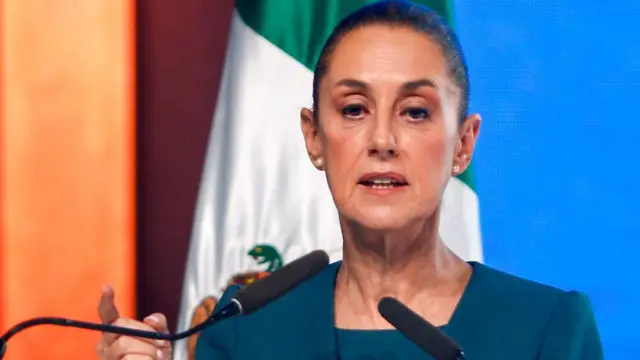The economic implications of the tariffs imposed by the United States on more than 60 countries or trading blocs are severe. They will impact supply chains, the price of goods, and the pocketbooks of citizens regardless of the country they live in.
In real terms, tariffs are applied early in the supply chain. Therefore, every 10 percentage point increase in tariffs typically means a 4 percentage point increase in consumer prices. This will translate into inflation.
And although President Donald Trump announced that he had authorized a 90-day pause on the imposition of so-called “reciprocal tariffs”—which are country-specific—he maintained the minimum 10% tariff on almost all imports to the United States.
Smartphones and computers are spared. So are semiconductors, solar cells, and memory cards.
And in this context, the world’s largest economy is preparing to negotiate the range from 10% to 47%, depending on the country, over the next three months. Thus, for example, Vietnam, which had previously imposed a reciprocal tariff of 46%, will only be subject to 10% for the time being.
However, two countries were exempt this time: Mexico and Canada.
“From Washington: I have been officially informed that we are not included in the reciprocal 10% tariffs announced today,” Mexican Secretary of Economy Marcelo Ebrard said on his X account.
A worker with a Mexican flag on his T-shirt handles a steel plate. Image source: Getty Images
Image caption: The White House announced an increase of up to 125% on Chinese imports, which rose to 145% less than 24 hours later. Mexico fared better.
What will remain is the 25% tariff that the United States applies to imports of goods from Mexico and Canada that are not covered by the USMCA agreement. The same applies to steel and aluminum. However, the trade agreement signed by Trump during his previous term protects a large portion of Mexican exports.
That’s why many consider Mexico a “relative winner” in the tariff war unleashed by Trump and now have an advantage over rival manufacturing centers.
“In a better position”
“Mexico is in a better position than other countries, such as Asian countries, in terms of effective tariffs, as these nations are the most affected by the new tariff rates,” noted the Economic Research Department of Banamex, the National Bank of Mexico.
These Asian countries—which include Indonesia, Vietnam, and China itself—are direct competitors of Mexican factories due to their profiles as large global exporters with cheap labor.
The financial institution’s analysts estimate that, although the current tariffs make Mexico less competitive compared to US producers, the list announced by Trump, on which it does not appear, gives it “greater competitiveness compared to the rest of the world” and puts it “better positioned.”
That’s why they consider the future economic outlook has improved.
For Devan Kaloo, head of stock market investments at Aberdeen Investments, by staying out of the universal 10% threshold, Mexico will maintain its main advantages in global trade.
For the expert, it’s clear that “the US labor market will not be able to manufacture the low-end products that replace Chinese products in supply chains,” and this will cause many American brands to end up looking to their southern neighbor.
Wages Four Times Lower

“The Mexican population is very large, 133 million people, and manufacturing wages are comparable to those in China, and probably cheaper if tariffs are taken into account,” Kaloo explains to BBC Mundo.
“That’s why Mexico is attractive for industries that require a lot of labor and few skills, but also for those where there is greater concern about national security,” he adds.
Joaquín Barrera Alonso, director of fixed income and investments at Sura Investment, based in the firm’s Mexico City office, adds a new statistic:
“An employee working in manufacturing (in Mexico) earns up to four times less than the same employee in the same sector doing the same job in the United States,” he tells BBC Mundo.
“The proximity to the United States is also a positive aspect. Although Trump is obviously trying to get more companies to come and establish themselves in the United States, the reality is that there are already some that are very well established in Mexico, and they are unlikely to disconnect and move there,” he adds.
One of the best examples is perishable foods. Proximity is essential for their preservation. A large proportion of US fresh food imports come from Mexico and Canada. For example, almost 80% of fresh vegetable imports. And these products were exempt from tariffs.
Since the end of the COVID pandemic, when supply chains were disrupted, “US integration with Mexico has increased, and there are already strong industrial ties established,” adds Kaloo.
US Regulations

It’s not just proximity to the United States; companies in Mexico have in-depth knowledge of essential aspects such as US regulations that will contribute to expanding this cooperation.
“The country is large, with potential to expand industrial capacity, and the government is accustomed to supporting US investment through tax breaks and other schemes,” explains the head of stock market investments at Aberdeen Investments.
But not everything is good. Experts agree that customs duties, as announced, will ultimately lead to lower growth.
And a declining economy will likely lead to layoffs.
“Although Mexico wasn’t affected in the same way as other countries and there is a marginal advantage because it’s in a slightly better position, I think it’s unlikely to bring significant short-term investment or generate sustained growth,” says Arantza Alonso Berbotto, senior analyst in the global risk analysis area of Verisk Maplecroft’s Americas team.
“Mexico’s tariff should be zero because we are in a free trade agreement with the United States and Canada, and right now it isn’t. This is something that must be taken into account. Mexican imports have a lower-than-average tariff, but that doesn’t mean they don’t have any,” the analyst recalls in an interview with BBC Mundo.
“Based on the data, we see that we could enter a recession. Without a doubt, exports and tariffs have lowered all of the country’s growth forecasts. Uncertainty continues to dominate, and there are many doubts about what will happen with the USMCA,” Berbotto concludes, referring to the free trade agreement, which will be revised in 2026, but whose negotiations will likely begin this year.
It’s still unclear how long Trump’s tariffs will remain in place, nor which countries will achieve swift and effective negotiations that will allow them better conditions for selling their products in the United States, but for now, Mexico and Canada have avoided widespread increases.
What is certain is that the concern in Mexico is palpable. Many industries will have to adapt and navigate uncertain times while Claudia Sheinbaum’s administration tries to negotiate with Trump and somehow convey the message that a “tariff war” benefits no one.
The advantage over its competitors gives the country a breath of fresh air. But many Mexican factories, and many families, depend on what happens in the coming months.

Source: bbc




